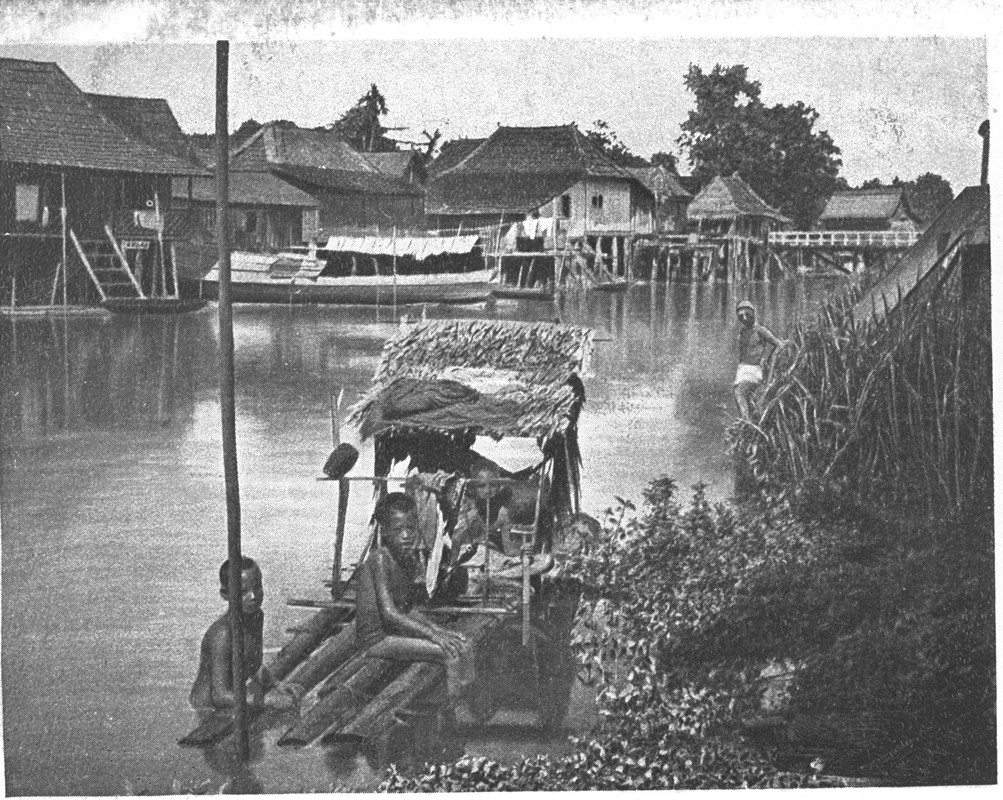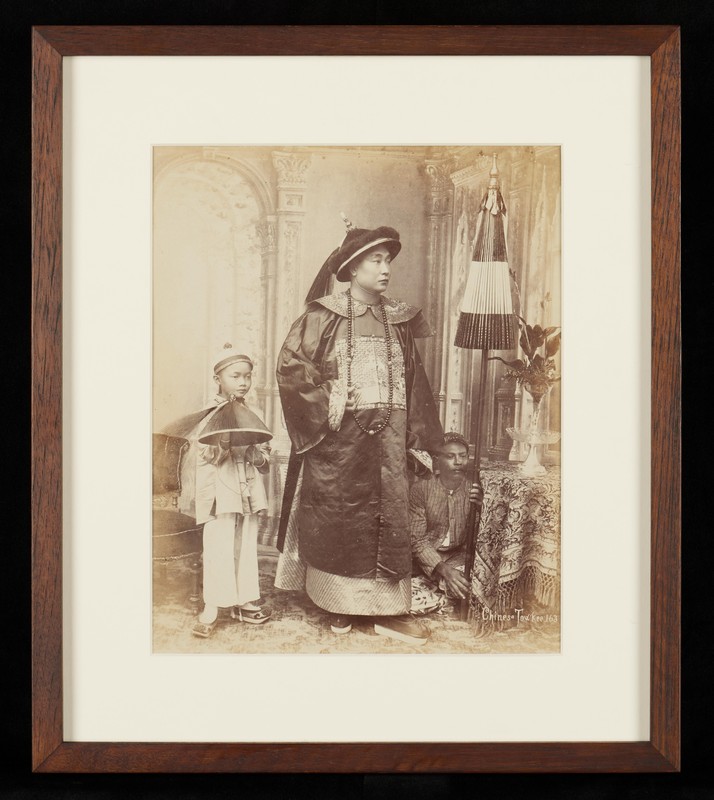Singapore’s Hakka cemeteries and related organisations
Chinese burial grounds, which served the needs of Singapore’s immigrant society, were based on the traditional Chinese culture of ancestral worship. The administration of these burial grounds was closely linked to dialect group politics of the time. In the 19th century, a dual political structure formed within Singaporean Chinese society. On one side was the powerful Hokkien dialect group, and on the other was a united front made up of the Cantonese, Hakkas, Teochews and Hainanese, headed by Cantonese and Hakka factions.1 The alliance between the Cantonese and Hakkas was a result of the Hakkas from Huizhou leaving the Hakka clan association to join forces with the Cantonese from the Guang and Zhao prefectures. This led to the formation of Kwong Wai Siew association, which later formed a united front with Kar Yeng Five Districts and Fong Yun Thai, two major Hakka groups from the Hakka bang. This alliance between the Cantonese and Hakkas eventually extended to the management of burial grounds.
From Cheng San Teng to Loke Yah Teng
The three Cantonese-Hakka clan associations, Kwong Wai Siew, Kar Yeng and Fong Yun Thai in the 1820s and 1830s jointly built the first burial ground, Cheng San Teng.2 It was located in the coastal area east of Ann Siang Hill, which is now the area west of Peck Seah Street. Until 1838, “the graves of Cheng San Teng line up like fish scales, not only do the headstones touch each other, but coffins often pile up upon coffins, indeed a miserable sight to witness”.3 So the Cantonese and Hakka clan associations began to look for a new burial ground to replace Cheng San Teng.
In 1840, three Cantonese and Hakka clan associations applied for a section of a hilly area in the suburbs to be used as a new public graveyard. On 20 January 1840, the British colonial government issued Land Deed No. 1525 with a term of 999 years, which stipulated that the land was not allowed to be used for other purposes, and once the lot was no longer used as a burial ground, it should be returned to the government. The new burial ground was named Loke Yah Teng, after the green hills and green fields in the area.4
In the second half of the 19th century, the population of Cantonese and Hakkas increased, with a huge wave of immigrants from southern China entering Singapore to make a living. As a result, Loke Yah Teng, a public graveyard, could no longer meet the burial needs of the Cantonese and Hakka ethnic groups. As a result, Kwong Wai Siew, Kar Yeng and Fong Yun Thai separately found sites to set up their own burial ground.
Kwong Wai Siew Peck San Theng
Kwong Wai Siew Peck San Theng (hereinafter “Peck San Theng”) was a cemetery management organisation started by immigrants from the Guangzhou, Huizhou and Zhaoqing prefectures in Guangdong province. It was jointly established by nine clan associations of the Kwong Wai Siew community in 1870.5 Later on, four clan associations under the Guangzhou prefecture – Ching Yoon, Fa Yun, Shun Tak and Chen Loong – and three guilds under the Zhaoqing prefecture, Koh Yiu, Hok San, and Yen Peng, joined too. Peck San Theng thus became a joint administration under 16 Kwong Wai Siew clan associations.
In the 20th century, Peck San Theng, in its efforts to develop, purchased 107.5 acres of land in 1948 for S$54,000, increasing the size of the burial ground to 253 acres. After that, it continued to purchase more land, and by 1973, Peck San Theng spanned 324 acres. On 28 August 1973, the Ministry of National Development issued a closure order, and in 1979, the government officially requisitioned Peck San Theng.
Peck San Theng representatives held numerous negotiations with the Ministry of National Development, and eventually obtained an eight-acre site for future development. In the 1980s, Peck San Theng transformed from a burial grounds administration to an operator of columbarium services, cultural heritage activities and welfare services. It also turned the only remaining eight acres into a tourist attraction.
Yu Shan Teng and Fong Yun Thai Ancestral Hall
In 1882, the Hakkas originating from Guangdong’s Fengshun and Dabu counties, and Fujian’s Yongding county, bought a piece of land over 150 acres on Holland Road and established the burial grounds of the Fong Yun Thai Kongsi, which were known as Yu Shan Teng. The Fong Yun Thai Ancestral Hall was also built on the site to house and honour ancestral tablets. That same year, Fong Yun Thai Kongsi had been established by members of the three clans (approval was obtained in 1909).6 It was renamed the Fong Yun Thai Association before the turn of the 20th century. In December 1970, the Maritime and Port Authority of Singapore announced in the Republic of Singapore Government Gazette that the majority of the Yu Shan Teng burial site would be requisitioned as an inland container warehouse. After it was requisitioned in 1975, the Fong Yun Thai Association set up a burial hill development management committee, a 10-member committee responsible for planning, developing and making full use of the 6.38 acres of land that was preserved.


The Kar Yeng Five Districts Shuang Long Shan
In the second half of the 19th century, Ying Fo Fui Kun purchased a site on Holland Road in 1887 and turned it into a burial ground. The two hills in the front and back of the site looked like a crouching dragon, so a fengshui master suggested naming it Shuang Long Shan. The two burial hills, commonly called the xinshan (new hill) and laoshan (old hill) burial sites, had a total area of 90 acres, and were together known as the Kar Yeng Five Districts Shuang Long Yishan (hereinafter Shuang Long Shan).
In the early days of Singapore’s independence, Shuang Long Shan met the same fate as the two aforementioned Cantonese and Hakka burial grounds. Shuang Long Shan, located in a site earmarked for development, received official notice of partial land requisition from the government in 1963. On 21 April 1963, the association executives resolved to send representatives to negotiate on 24 April of the same year. The Ministry of National Development later approved the return of about five acres of lower-lying land for use by Ying Fo Fui Kun to build a burial site and memorial hall. Since Shuang Long Shan was requisitioned, the association placed urns on both sides of the existing Shuang Long Shan Wu Shu Ancestral Hall containing the ashes of the ancestors of the five districts.

Ancestor worship is an important belief integral to the Hakka community, and brings the entire ethnic group together. Cheng San Teng, Loke Yah Teng, Peck San Theng, Fong Yun Thai Ancestral Hall and Shuang Long Shan are all important places of ancestor worship for local Hakkas. The period from the 1960s to the 1980s was an important one for Singapore’s development. Hakka burial hills were requisitioned by the government for construction and development. Consequently, cemetery management organisations transformed into associations promoting culture and welfare.
This is an edited and translated version of 新加坡客家人的坟山组织. Click here to read original piece.
| 1 | Lim How Seng, “Kaibu chuqi de Xinhua shehui” [Early Chinese Society after the Opening of Singapore as a Port], in Xinjiapo huashe yu huashang, 28–62. |
| 2 | “Not long after commercial ports in Singapore started operating, like-minded Chinese from seven locales (Guang, Wai, Siew; Kar Yeng Chow; Fong, Yun, Thai who headed south grew in number; these people who gathered far away from the motherland inevitably met with disaster, disease and death. Kinfolk who could not bear seeing the unclaimed dead came together to plan for a local burial ground. Its lush vegetation and undulating hills gave it the name Cheng San Teng”. See Xinjiapo fudeci lüyeting gonghui yibaiqishiwu zhounian jiniantekan [Singapore Hok Tek Chi Loke Yah Teng Association’s special 175th anniversary commemoration issue], 36. |
| 3 | Xinjiapo fudeci lüyeting gonghui yibaiqishiwu zhounian jiniantekan [Commemorative issue of the 175th anniversary of Singapore Hok Tek Chi Loke Yah Teng Association], 36. |
| 4 | Ibid., 37. |
| 5 | From Guangzhou prefecture: Nam Sun, Poon Yue, Tung On, Chung Shan, Ning Yeung, Kong Chow, Sam Sui, a total of seven guilds. From Huizhou prefecture: Wui Chiu Fui Kun; from Zhaoqing prefecture: Siu Heng Wui Kun. |
| 6 | Singapore Foong Shoon Fui Kuan Special 130th Anniversary Issue Editorial Committee, Xinjiapo fengshun huiguan chengli yibaisanshi zhounian jiniantekan [Singapore Foong Shoon Fui Kuan’s special 130th anniversary commemorative issue], 139. |
Hok Tek Chi Loke Yah Teng Association. Xinjiapo fudeci lüyeting yibai qishi wu zhounian jinian tekan (1824–1999) [Commemorative issue of the 175th anniversary of Singapore Hok Tek Chi Loke Yah Teng Association (1824–1999)]. Singapore: Lingzi Media, 1999. | |
Lim, How Seng. Xinjiapo huashe yu huashang [Singapore Chinese community and entrepreneurs]. Singapore: Singapore Society of Asian Studies, 1995. | |
Singapore Foong Shoon Fui Kuan 130th Anniversary Commemorative Issue Editorial Committee. Xinjiapo fengshun huiguan chengli yibai sanshi zhounian jinian tekan [Commemorative issue of the Singapore Foong Shoon Fui Kuan’s 130th anniversary]. Singapore: Foong Shoon Fui Kuan, 2003. |










